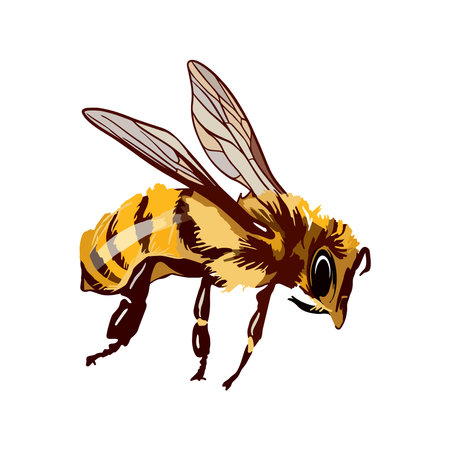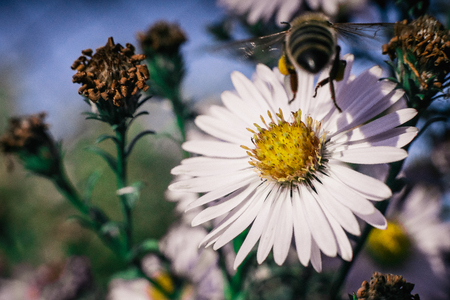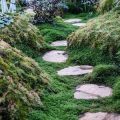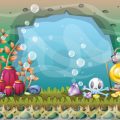Introduction to Wildlife Ponds and Their Importance
In British gardens, wildlife ponds are far more than just a picturesque feature—they play a crucial role in nurturing pollinators and beneficial insects. Ponds offer vital habitats for bees, hoverflies, butterflies, and many other helpful creatures. By providing clean water, shelter, and food sources, these small bodies of water become lifelines that help sustain local biodiversity. In the UK, where urbanisation and intensive gardening practices often limit natural habitats, introducing a pond can create a thriving micro-ecosystem right in your back garden. This not only benefits the insects themselves but also supports the health of your plants and the wider environment. Understanding how ponds fit into local ecosystems is the first step towards creating spaces that support both wildlife and people.
2. Key Features of a Pollinator-Friendly Pond
Designing a pond that attracts pollinators and beneficial insects requires careful consideration of several key features. By focusing on the right size, depth, and water quality, you can create a thriving habitat for bees, hoverflies, butterflies, and other helpful species commonly found in British gardens.
Essential Elements at a Glance
| Feature | Recommended Specification | Benefit for Pollinators |
|---|---|---|
| Pond Size | At least 1.5m x 1.5m | Larger surface area provides more habitat variety and stability in water conditions. |
| Pond Depth | Range from 20cm to 60cm with gently sloping edges | Allows for diverse planting zones and easy access for insects. |
| Water Quality | No chemicals or tap water; use rainwater if possible | Supports sensitive insect larvae and encourages natural biodiversity. |
| Plant Diversity | Native aquatic and marginal plants such as Water Mint, Yellow Flag Iris, and Marsh Marigold | Provides food, shelter, and egg-laying sites for various insects. |
| Bare Banks & Shallow Margins | Create open muddy areas around the pond edge | Essential for solitary bees to drink and nest, and for hoverflies to land safely. |
| Shelter & Shade | Add log piles, stones, and patches of wildflowers nearby | Offers resting spots and additional food sources throughout the year. |
Understanding Size and Layout
A pond doesn’t need to be grand to be effective. Even modest-sized ponds can support an impressive array of wildlife if designed thoughtfully. Aim for a minimum size of 1.5 metres square to ensure temperature stability and provide enough space for plant diversity. Gently sloped banks are crucial—these allow insects safe access to water without risk of drowning, making your pond a true haven for pollinators.
The Importance of Depth Variation
Diverse depths support different species at each level. Shallow margins (20-30cm) are perfect for emerging insects like dragonflies, while deeper sections (up to 60cm) help maintain cooler temperatures during summer heatwaves. This variation mimics natural ponds found across the UK countryside.
Maintaining Clean Water Quality
Avoid using tap water which often contains chlorine or other chemicals detrimental to delicate insect larvae. Collect rainwater where possible. Avoid all garden chemicals near your pond—pollinators are especially sensitive to pesticides and fertilisers.

3. Selecting Native Plants and Marginals
Choosing the right plants is at the heart of designing a wildlife-friendly pond that supports pollinators and beneficial insects. Focusing on British native aquatic and marginal species ensures your pond complements the local ecosystem, providing food, shelter, and breeding grounds for a variety of creatures.
Why Choose Native Species?
Native plants are adapted to Britain’s climate and soil conditions, making them resilient and easy to maintain. More importantly, they form natural relationships with local pollinators such as bees, butterflies, hoverflies, and dragonflies, as well as other beneficial insects. These plants offer nectar, pollen, leaves, and stems that native insects recognise and rely upon.
Recommended Aquatic Plants
When selecting aquatic plants for your pond’s deeper areas and surface, consider:
Water forget-me-not (Myosotis scorpioides): A favourite with bees, its delicate blue flowers bloom from spring to autumn.
Yellow flag iris (Iris pseudacorus): Striking yellow flowers attract pollinators and provide cover for emerging insects.
Brooklime (Veronica beccabunga): Offers shelter for aquatic larvae while attracting hoverflies with its small blue flowers.
Marginal Plants for Edges
The margins of your pond are just as vital. Planting native marginals along gently sloping edges creates habitats for amphibians, beetles, and solitary bees. Popular choices include:
Marsh marigold (Caltha palustris): One of the first spring blooms, it provides early-season nectar for queen bumblebees.
Purple loosestrife (Lythrum salicaria): Its vibrant spikes support a range of pollinating insects.
Water mint (Mentha aquatica): Highly attractive to bees and butterflies, while its aromatic leaves deter some pests.
Avoid Invasive Species
Be mindful to avoid non-native or invasive species such as Canadian pondweed or New Zealand pygmyweed, which can quickly overrun your pond and outcompete native plants. Always source plants from reputable UK suppliers to ensure they are genuinely native and free from invasive hitchhikers.
Selecting the right mix of native aquatic and marginal plants transforms your pond into a sanctuary for pollinators and beneficial insects, supporting local biodiversity while creating a visually harmonious feature in your garden.
4. Encouraging Biodiversity with Natural Materials
One of the most effective ways to create a thriving pond that supports pollinators and beneficial insects in the UK is to use natural materials thoughtfully. By incorporating elements like stone, wood, and native plants, you provide essential habitats and shelter for a wide range of creatures. This approach not only enhances biodiversity but also creates a visually appealing pond that blends seamlessly with the local landscape.
Natural Stone: Shelter and Basking Spots
Natural stone offers more than just aesthetic appeal. Stones placed around the pond’s edge or partially submerged in shallow water provide hiding spots for amphibians, insects, and even small mammals. Flat stones can serve as basking platforms for dragonflies and butterflies, while crevices between rocks offer safe retreats from predators.
Benefits of Using Stone
| Type of Stone Feature | Primary Benefit | Ideal For |
|---|---|---|
| Boulders at Pond Edge | Shelter & microclimates | Frogs, newts, beetles |
| Flat Stones (Basking) | Warmth & sun exposure | Dragonflies, butterflies |
| Stone Piles/Rockeries | Nesting & overwintering sites | Solitary bees, spiders |
Wood: Creating Nooks and Overwintering Spaces
Add logs or branches around your pond to encourage natural diversity. Decaying wood becomes home to beetles, fungi, and many types of larvae, while stacked log piles offer shelter during cold British winters. Driftwood or untreated timber can be half-buried in mud at the water’s edge to create humid refuges for frogs and other amphibians.
Top Tips for Wood Placement
- Use native hardwoods like oak or hazel when possible.
- Avoid painted or treated timber to keep your pond chemical-free.
- Create both horizontal and vertical structures for maximum variety.
- Let some logs decay naturally to attract specialist insects such as stag beetles.
Planting Techniques: Native Flora for Pollinators and Insects
Selecting the right plants is crucial for providing food and breeding grounds throughout the year. Choose a mix of aquatic, marginal, and nearby terrestrial plants with staggered flowering times to attract bees, hoverflies, and butterflies. Native species are best suited to British pollinators and require less maintenance than exotics.
Recommended Plant Types by Zone
| Pond Zone | Examples of Plants | Main Benefits for Wildlife |
|---|---|---|
| Aquatic (in water) | Water forget-me-not, Yellow flag iris | Nectar & cover for aquatic insects |
| Marginal (pond edge) | Marsh marigold, Purple loosestrife | Nesting sites & pollen sources for bees/hoverflies |
| Terrestrial (nearby) | Cowslip, Red campion, Oxeye daisy | Shelter & nectar for butterflies/moths |
Aesthetic Tip:
Aim for gentle transitions between zones using curved lines and mixed planting heights—this looks naturalistic while maximising habitat options.
5. Seasonal Pond Maintenance and Wildlife Care
Gentle, Year-Round Pond Management
Looking after your wildlife pond with a gentle touch is key to supporting pollinators and beneficial insects across the changing British seasons. Traditional pond cleaning methods can unintentionally disrupt delicate habitats, so it’s best to work with nature’s rhythms for a thriving, balanced ecosystem.
Spring: A Careful Awakening
As temperatures rise, life returns to your pond. Remove fallen leaves and debris by hand, but avoid major cleaning until amphibians and insects have finished breeding. Prune back overgrown plants only where they are smothering light or access, leaving plenty of cover for emerging pollinators like bees and hoverflies.
Summer: Maintain Water Quality
Warm weather can mean rapid plant growth. Thin out floating and submerged plants in small sections to prevent oxygen dips while preserving shelter for dragonflies and other insect larvae. Top up water levels using rainwater collected in water butts, as tap water contains chemicals that may harm sensitive species.
Autumn: Gentle Preparation for Dormancy
As days shorten, allow some leaf litter to remain at the pond’s edge—this provides overwintering sites for beetles and solitary bees. Remove excessive debris only if it threatens to deplete oxygen as it decays. Trim dead foliage from marginal plants gradually so you don’t disturb hibernating wildlife.
Winter: Minimal Disturbance
Ponds need little attention in winter. If ice forms, gently melt a small patch with a pan of hot (not boiling) water to maintain gas exchange, but avoid breaking the ice suddenly. Leave reeds and grasses standing to shelter overwintering insects and provide structure until spring returns.
Wildlife-Friendly Tips All Year Round:
- Avoid using chemical treatments or fertilisers near your pond.
- Monitor for invasive species, removing them by hand rather than with harsh controls.
- Let wildflowers and grasses grow near the pond edge to create habitat corridors for pollinators.
With these mindful practices, your garden pond will remain a haven for pollinators and beneficial insects throughout every season in the UK, helping them flourish year after year.
6. Common Challenges and Local Solutions
British gardens face a unique set of challenges when it comes to maintaining ponds that support pollinators and beneficial insects. Understanding these common issues, as well as practical local solutions, is essential for creating a thriving pond ecosystem.
Dealing with Invasive Species
Non-native plants like New Zealand pygmyweed (Crassula helmsii) or floating pennywort can quickly overrun ponds, outcompeting native species vital for insects. Regularly monitor your pond, remove invasive plants by hand, and source pond plants from reputable UK suppliers to reduce this risk.
Managing Water Quality
Ponds can suffer from algae blooms and poor water quality, especially in warmer months. Avoid chemical treatments; instead, plant oxygenators such as hornwort and include floating plants like water lilies to provide shade and reduce excess nutrients naturally. Top up evaporated water with rainwater rather than tap water to prevent chemical build-up.
Protecting from Predators
Cats, birds, and even hedgehogs may disturb pond life. Installing simple barriers or using pond netting during vulnerable periods helps protect young amphibians and insects without harming local wildlife. Consider adding dense marginal planting to offer natural shelter for insects and larvae.
Combating Pollution Runoff
Fertilisers and pesticides from lawns or nearby fields can enter your pond after rain, harming sensitive species. Create a buffer zone of native grasses or wildflowers around the pond’s edge to filter runoff and avoid using chemicals near your pond.
Tackling Drought and Water Loss
Prolonged dry spells are increasingly common in the UK. Reduce evaporation by increasing shade with native aquatic plants and ensure your pond has gently sloping sides so wildlife can access remaining water easily. Collect rainwater in barrels for topping up during droughts.
Supporting Year-Round Habitat
Seasonal changes mean some insects require winter refuge. Leave some leaf litter and dead stems around your pond through autumn and winter to offer habitat for overwintering pollinators. Resist the urge to tidy too much until spring arrives.
By anticipating these British garden challenges and applying thoughtful, nature-friendly solutions, you’ll help ensure your pond remains a healthy haven for pollinators and beneficial insects throughout the year.


